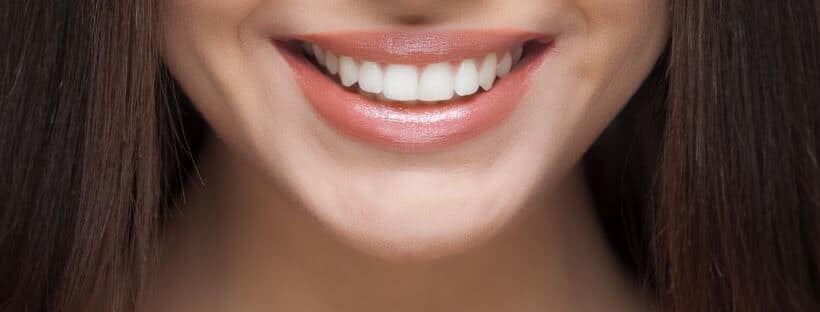[et_pb_section fb_built="1" _builder_version="3.22" min_height="1884px"][et_pb_row _builder_version="3.27.3"][et_pb_column type="4_4" _builder_version="3.27.3"][et_pb_text _builder_version="4.0.6" custom_padding="||2px|||"]
What Can Happen at and What Brings You to the Dental Office
The most common type of emergencies that can happen to people are medical. However, dental emergencies can often be just as standard and, in some instances, be just as frightening or life-threatening. The field of dentistry is filled with services that allow your dentist to shape and improve your smile for aesthetic reasons, or fix problems that could affect the health. But emergencies and how they are treated are different. Take a look at some of the most common dental emergencies both in and out of the office.
[/et_pb_text][/et_pb_column][/et_pb_row][et_pb_row _builder_version="3.27.3"][et_pb_column type="4_4" _builder_version="3.27.3"][et_pb_image src="//i2.wp.com/allin1dental.com/wp-content/uploads/2020/01/tooth-first-aid-kit.jpg" align="center" _builder_version="4.0.6"][/et_pb_image][/et_pb_column][/et_pb_row][et_pb_row _builder_version="3.27.3" min_height="456px" custom_padding="||90px|||"][et_pb_column type="4_4" _builder_version="3.27.3"][et_pb_text _builder_version="4.0.6" min_height="797px" custom_margin="-70px||-70px||true|" custom_padding="||0px|||" hover_enabled="0"]
In-Office Dental Emergencies
No one really likes to think about any negative aspects of going to the dentist. Often visiting the dentist is scary enough, without wondering what else can go wrong. Luckily, with modern dentistry and the advancement of techniques in the field, emergencies are few and far between.
When talking about dental emergencies in the office, it is related to medical emergencies. These can vary in severity, but any of the following can be a frightening issue for any patient. The most common problems that arise in the dental chair can include:
- Pain attacks (hyperventilation)
- Fainting (vasovagal syncope)
- Choking (aspiration)
- Myocardial infarction
- Seizures
- Diabetic issues
- Allergies
- Hypersensitive reaction resulting in minor discomfort
As you can see, many of the emergencies that can arise in the chair can be prevented. Often clear communication with your dentist is enough to eliminate certain situations from happening. For example, those that have a latex allergy could avoid issues by alerting their dentist and hygienist to this allergy. The office will then accommodate the need for a latex-free field while treating the patient.
Always remember to be open with your dentist about known conditions. These can include allergies, medical conditions, or simply how you are feeling about the appointment(anxiety/stress). Typically dental offices will ask about known issues with initial paperwork, but it never hurts to remind staff if you have serious problems that are known to cause complications.
However, some situations are unavoidable. When these things arise, the dentist must respond quickly. In cases where a dental emergency can be life-threatening or occurs in the dental office, the dentist must have the State required CPR training. Every physician is required to have a valid CPR training to ensure they can perform this life-saving technique. Heart Start CPR provides training and a two-year certification to medical professionals, individuals, as well as groups for BLS/CPR, First-Aid, ACLS, and PALS.
[/et_pb_text][/et_pb_column][/et_pb_row][et_pb_row _builder_version="4.0.6"][et_pb_column type="4_4" _builder_version="4.0.6"][et_pb_text _builder_version="4.0.6" custom_padding="20px|||||" hover_enabled="0"]
Out of the Office Dental Emergencies
Dental emergencies outside of the office are definitely different than those that occur in the office. While those in the office revolve around allergies, or reactions to a service, dental emergencies that happen out of the office are either from an infection or an accident.
What sometimes classifies a dental emergency is that it brings a person who would generally avoid the office into the office for treatment. Any time a patient experiences a dental emergency out of the office, it is best that they call the office to determine if they should be seen ASAP or if they can wait until the next available appointment.
Gum Abscesses
Known for being a painful condition, gum abscesses can lead to severe complications if left untreated. An abscess is a pocket of pus. They can occur at any place on the body, and can even include the gums. When this pocket of pus forms on the gums, it will cause swelling and irritation.
Typically an abscess contains an infection, which can be life-threatening if left untreated. Your dentist may opt to drain the abscess and cleanse the area, as well as prescribing antibiotics. The most common causes for this dental emergency is poor dental hygiene, active periodontal disease, and not visiting your dentist regularly for cleanings to remove plaque, tartar, and bacteria.
Pulpal Abscesses (Pulpitis)
When anyone talks about severe tooth pain, it is typically caused by a pulpal abscess. The infected pulp of the tooth causes inflammation, which is what most individuals feel. Certain conditions like irreversible pulpitis can lead to a periapical abscess, which develops at the root of the tooth, where the pocket of pus is formed. If not treated, the infection can travel to the bloodstream, causing sepsis a serious condition that is life-threatening.
Broken Tooth
Broken teeth can happen from an accident or just from biting. While at first, it won’t seem like too big of a deal, damaged teeth can range in severity from a slight chip to a tooth broken down to the gumline. A chip might have no symptoms. A tooth that is broken in half could quickly become infected, and therefore become very painful. Typically a broken tooth can wait until the next available office appointment.
Inflammation Around Wisdom Teeth
Wisdom teeth are often the most painful dental problems a person can experience, aside from an infected tooth. The third set of molars, when erupting can feel similar to when a person got their baby teeth. However, there is far less room for the wisdom teeth to sprout, which can cause a great deal of inflammation to the gums, in addition to crowding. There is simply no place for the teeth to go.
For most patients with wisdom teeth issues, they aren’t an emergency, though it may feel this way because of the discomfort. But it is still a good idea to contact the dentist to have the wisdom teeth evaluated or to schedule an extraction.
Trauma to a Tooth (Accident)
Injury to a tooth is one of the most common things we see. Causes for the injuries can include falling face-first or getting hit in the mouth with an object or any other unexpected accidents. What happens most often is the tooth is completely knocked out. This can be scary. The thought that their tooth is gone and there is a gaping hole, can make anyone nervous. But the good news about this dental emergency is that if a tooth is knocked out, and is otherwise not damaged, it may be salvageable.
What you should look for with a knocked-out tooth is if the root is still intact. If the tooth seems in good condition, your dentist may be able to place it back in the socket. Notify your dental office as soon as the accident happens.
[/et_pb_text][/et_pb_column][/et_pb_row][/et_pb_section]
The following post The Most Common Dental Emergencies is republished from: All-In-One Dental Innovations
All In One Dental Innovations
7046 Dublin Blvd, Dublin, CA 94568
(925) 828-9811
Our Dublin Location

